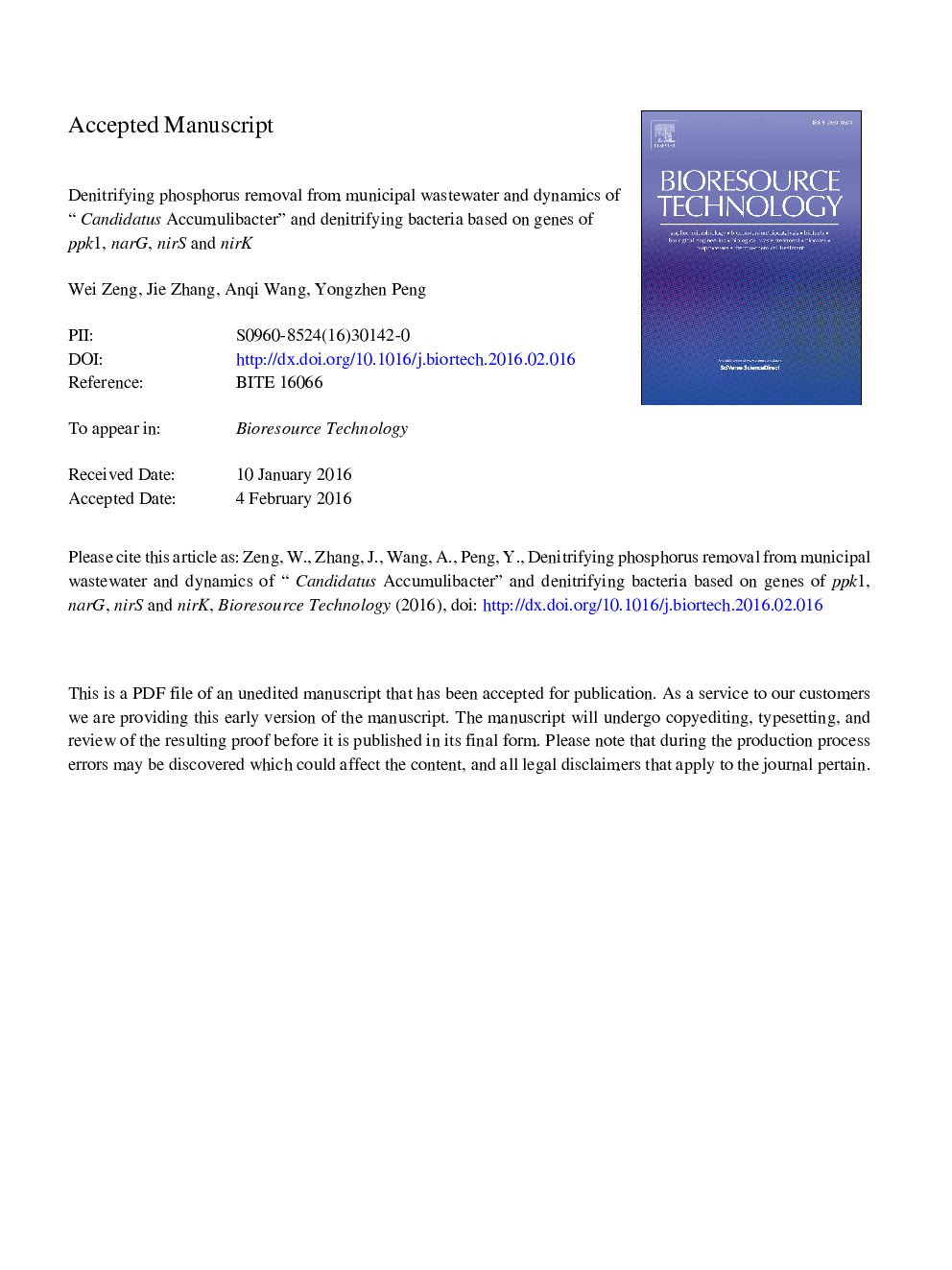| Article ID | Journal | Published Year | Pages | File Type |
|---|---|---|---|---|
| 7072164 | Bioresource Technology | 2016 | 36 Pages |
Abstract
Relevance of clade-level population dynamics of “Candidatus Accumulibacter” to performance of denitrifying phosphorus (P) removal from municipal wastewater was investigated. Stable denitrifying P removal in anoxic zone of continuous-flow reactor was achieved, accounting for 90% of total P removal. Clades IIC and IIF affiliated with Accumulibacter lineage were the dominant clades during denitrifying P removal, reaching 90% of ppk1 clone library. NarG gene library indicated Gamma and Beta-proteobacteria played an important role in nitrate reduction. Diversity and abundance of nirS library was much more than nirK, and thus became the main functional gene to execute nitrite reduction. Based on abundance of nirS, nirK and ppk1, the ratio of Accumulibacter capable of denitrifying P removal to total Accumulibacter was 22%. No matter whether Accumulibacter had narG gene or not, high abundance of narG at a level of 109Â cells/(g dried-sludge) promoted nitrate reduced to nitrite, ensuring performance of denitrifying P removal.
Keywords
Related Topics
Physical Sciences and Engineering
Chemical Engineering
Process Chemistry and Technology
Authors
Wei Zeng, Jie Zhang, Anqi Wang, Yongzhen Peng,
